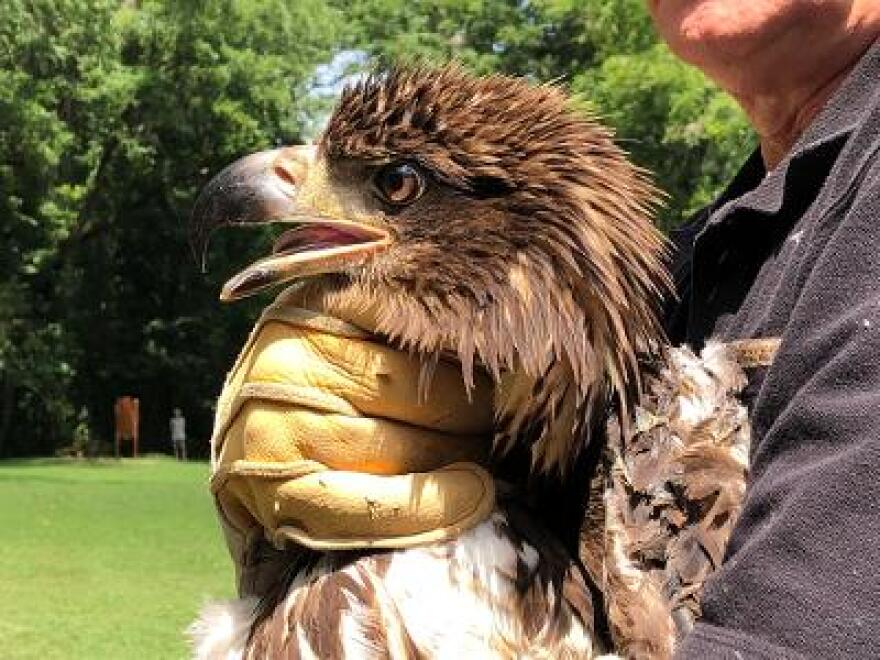About three hundred people gathered in a giant circle as the president of the Wildlife Center of Virginia carried the nine-pound bird around – affording everyone the thrill of a close encounter. Last March the three-year-old female was found in Grottoes’ Grand Caverns Park with broken bones. It had likely been hit by a car while feeding on roadkill, but the high tech veterinary center in Waynesboro was able to save it, contributing to what Ed Clark calls a great conservation story for American eagles in Virginia.
“They were at the brink of extinction in the early seventies. We had fewer than 50 pairs in the whole state," he explained. "This past year is probably the last year they’re even counting nests, because there are more here than we can even count. We’re probably looking at something in the neighborhood of 2,000 nesting pairs now, and people here in the Shenandoah Valley will say, ‘Oh it’s so nice to have the eagles back in the Shenandoah Valley.’ Well they’re not back. They’re here for the first time. They did not live here previously. Typically their primary habitat is near large bodies of water, tidal rivers, Chesapeake Bay, coastal areas, but as the population filled up primary habitat, what’s left of it, the birds have had to move further and further west as the population grows. There’s just no place for them where they’re supposed to be that isn’t already full, so they compete heavily for nesting territories, and now one of the common injuries we get are eagles that are injured in fights with other eagles.”

And this bird, like many other raptors, also suffered lead poisoning that could be traced to a hunter’s bullet.
“A high percentage of their diet in this part of the state is scavenging –- eating roadkill and during the hunting season scavenging behind hunters – gut piles, animals that are shot and not recovered. Even in the summer somebody shoots a groundhog in the pasture and leaves it there, that’s food for an eagle, and if it has shards of lead in it from the bullet that killed it, it’s a toxic time bomb," Clark said.
He urged hunters in the crowd to stop using lead bullets and said manufacturers now offer many good alternatives. The center didn’t fit this bird with a tracking device. They’re expensive, and experts have already learned what they need to know about these raptors treated at the wildlife center and released. They can live as long as any other eagle –- up to 35 years, and they don’t get attached to people.
“Wildness is in them, and you can’t love it out of them," Clark said. "We don’t pet them, we don’t talk to them. There’s no coochie coo. When they see a person coming for them, something unpleasant is about to happen. They’re going to be grabbed and given a shot or examined or restrained or whatever, so when they are released if anything they avoid people at all costs.”
Then it was time to give this girl her freedom. Clark could not predict where she might go.
“I released two birds together in Northern Virginia," he recalled. "One of them stayed put in the national wildlife refuge and state park where it was released, and the other one went straight to the Maritimes in Canada -- just right up the east coast."
And he couldn’t guarantee the safety of the crowd.
“I had one bird that flew away, came back, looped around and pooped on the crowd," he warned. "We got it on video. We can prove it, but this one we hope has better manners.”
As a small plane flew overhead – perhaps inspiring the bird – Clark released her.
“Alright, are you ready?" he cried. "One, two three! Over the shelter, around the trees, around the corner!”
This report, provided by Virginia Public Radio, was made possible with support from the Virginia Education Association.


